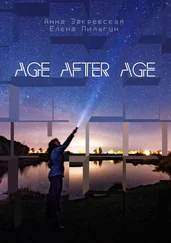“I do ,” said Emily.
“Why?” asked Sadie, sighing with exasperation.
“She’s my sister,” said Emily. Sadie, Lil, and Dave were all only children. Which, Emily thought, explained a lot. Tal would have understood, but Tal was gone. She hadn’t heard from him in almost a year.
“She’s mentally ill,” countered Sadie.
Now that Clara was coming, she regretted ever telling her friends the extent of her sister’s woes. They looked at Clara’s situation too clinically, as though she were a character in an after-school special: the shaggy-haired girl getting high in her elementary school bathroom; the cinematic junkie, gorgeous and emaciated, lying comatose in a squat, dirty needles stuck in her arm. They didn’t understand that Clara was just a normal person, like any of them. At Chapel Hill, before her first big breakdown, she’d studied painting. After she came out of Holly Hill, with a fat prescription for Prozac, which no one had heard of at that point, she refused to go back to school, saying she was embarrassed (“I just can’t face them”). And so she stayed home and took classes at Greensboro, but something was changed, broken, wrong . She couldn’t finish a painting—her little studio in Gatewood was filled with eerie portraits, complete except for the subjects’ blank, flat faces—much less a class. And yet somehow, despite the drugs and the feuds with professors and the classes failed due to lack of attendance, she managed, after eight-odd years, to put on a cap and gown, march across the sneaker-scarred floor of the Coliseum, and snatch her degree from Dean Garfield, known to Emily and Clara as Uncle Bo (he’d been a new history hire the same year their mother started in women’s studies). Along the way, she’d learned to weld and solder and build things with wood and sew and weave fabric and rewire a lamp and knit, the result of trading painting for sculpture. And she’d learned to cook, too, and bake bread, during the years she’d waitressed at Liberty Oak. Those were good years, as were the ones in which she’d worked at a local architecture firm—she’d talked about going back to school, becoming an architect herself—but they were outnumbered by the bad ones. And they had been long ago. The Clara of recent memory had flung a heavy ball of dough at Emily when she’d argued that no, their parents didn’t actually favor her, and no, she didn’t think Clara’s ex-husband was sneaking into her apartment and adding rat poison to her coffee.
But the Clara who emerged from the Trailways bus into the bleak bowels of the Port Authority seemed positively sane—happy, even. She carried a large tote bag imprinted with the words “Nurses are better lovers”—given to her by Jolene, her favorite nurse, she told Emily (who reflexively wondered if she’d stolen it)—and a bouquet of wilted purple irises, which she’d picked up during her layover in Burlington. “They’re for you,” she told Emily. “I saw them and I thought, ‘Those are the flowers for my sister.’ Because I know you love purple.” Emily thanked her and took the cellophane cone of blossoms, laying them across her arms like Miss America. Purple had been her favorite color approximately twenty-six years earlier, following a stray comment from a stranger that lavender brought out the red of her hair. At the time, she’d also been fond of stuffed unicorns, stylized images of rainbows, and the original cast recording of Annie .
Arm in arm, the sisters made their way up and out of the bus station, Clara nearly skipping with excitement. Years later, Emily would say that Clara’s arrival was the best thing that could have happened to her, for it allowed her to put her own problems—the play, Curtis, her career—behind her and focus her energies on rehabilitating her sister: occupational therapy, just like the little sweaters Clara knitted at Brattleboro, destined for the tiny shoulders of crack babies in New Haven. Perhaps more important, there was the fact of September eleventh, the day before which Clara arrived. Emily didn’t quite see how she could have faced the terrifying—and terrified—city all alone, newly alone. As it was, she had Clara, who reacted to the tragedy with somber, tearful shock—an appropriate response and, Emily told her mother, a measure of the extent of Clara’s recovery. “It’s amazing, Mom,” she’d said. “She’s like a different person. They must have found the right meds for her. I mean, it’s incredible. It’s like she can see other people, you know.”
The Old Clara would have looked at the planes, the hijackers, the legions dead or missing, the vigils and shrines, through a purely solipsistic lens, insisting, maddeningly, on some personal connection, like “My sister used to work in the Trade Center”—this was true; years back, Emily had temped there—“Can you believe it? She could have been there.” The New Clara sat on the couch, hands pressed to her cheeks, saying, “Oh God, Emily, those people, those poor people. We’ve got to do something. Is there anything we can do?” There wasn’t really, they found out when they called the various numbers for volunteers. Only people with medical training were needed, though Emily and Clara could go to the Javits Center and see if there were any tasks for them. But they were in Brooklyn and the train wasn’t running and Emily had already walked all the way home from midtown in her least comfortable shoes—crossing the bridge with legions of refugees from the Financial District, their suits and hair covered in an odd white ash, their eyes grimy and red—and so they stayed in the apartment, listening to the radio in silence, periodically trying to call their parents and Sadie (alone with Jack, my God ) and Beth (Will’s office was down there, wasn’t it?) and the others ( Curtis , Emily kept thinking, I really should call Curtis ), but the phone was dead, endlessly dead, the network of Emily’s cell phone permanently busy.
In the afternoon, they walked over to Lil and Tuck’s and watched their television, gulping beer as the towers collapsed over and over on the screen before them. Lil was uncharacteristically silent, Tuck unusually chatty. “We knew,” he kept saying. “We knew this was fucking going to happen. It’s bin Laden. They’ve been fucking monitoring him for years.” Clara and Emily, from their respective chairs, nodded. “Did you read that piece about him in The New Yorker ?” They had not. “It was, like, a year ago. In The New Yorker . Lawrence Wright or one of those guys—I can’t remember—anyway, whoever, he, essentially, said bin Laden was going to do something like this. And fucking Bush paid no attention.”
“I don’t think Bush reads The New Yorker ,” said Clara, with a smile.
“ You know what I mean ,” said Tuck, his arm wrapped around Lil, who sat limply on their sprung green couch, still dressed in her work clothing—a smart wrap dress, black, with blue flowers, that gaped slightly at the center of her chest. Diane von Furstenberg, Emily thought, though she didn’t know how Lil could afford it. There was no way she was making more than thirty grand working at that nonprofit.
“You have to finish,” Lil said a few minutes later, after so long a silence that Emily didn’t know to whom she was speaking or in response to what. Her voice was low and hoarse, her eyes cast down in her lap.
Sullenly, Tuck extracted his arm from her shoulders. “I’m going to finish,” he said.
Oh , thought Emily. They were talking about Tuck’s book, of course, which was now a year late—maybe more. Back in July, under extreme duress, he’d turned in the first three chapters, which Sadie had pronounced “pretty good” (“overwritten,” she told Emily and Beth privately, “I should have never mentioned Gay Talese”). By August, as Sadie’s due date approached, the famous Val had resumed her ominous questioning, and Sadie began a phone campaign (“Tuck, please just give me whatever you have before I go on leave”), this time to no avail. Jack had come, a week early, and Tuck had been passed on to her former assistant, who could not be counted on to shelter Tuck from Val’s bottom line.
Читать дальше












